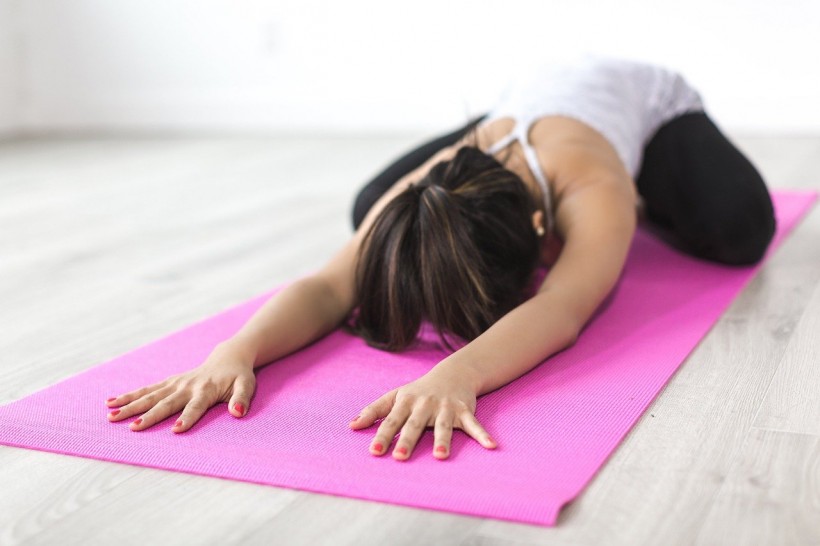Should You Stretch Before or After Your Workout?

Working out keeps you healthy and makes you feel good, but it can also cause the potential for injuries and result in soreness after the workout that makes you much less likely to want to work out again. Stretching can be a very beneficial part of your workout routine, but it is essential that you stretch in the right way at the right time around your workout.
When Should You Stretch?
Stretching comes with a number of health benefits, both physical and mental. Therefore, it's a great idea to incorporate stretching into your daily routine. It may even be wise to stretch multiple times throughout your day. However, when it comes to working out, is it better to stretch before, after, or both before and after your workout?
Despite what you may have been told in high school gym class, there are actually no advantages to static stretching before a workout. In fact, pre-workout stretches can even have negative effects. On the other hand, stretching after a workout can have significant benefits, such as improving circulation and reducing muscle soreness.
Stretching periodically throughout your day prior to a workout but not directly before a workout can also have benefits for your workout since regular stretching can improve your overall flexibility. It is a very good idea to learn some essential stretches for flexibility and work them into your daily routine so that you'll be more flexible whenever you work out. Increased flexibility makes it less likely that you'll be injured and can improve your performance. Among the many reasons why you may be injured during a workout is poor flexibility.
When is Stretching Before a Workout Appropriate?
Some types of stretching prior to a workout are a good idea, although the static stretches that may have been recommended by your high school gym class are not the type you need. Instead, choose dynamic stretching before you workout.
Dynamic stretching can be worked into your warm-up routine. For instance, lunges are both an effective way to get your heart pounding and warm-up and a good way to stretch. There are a number of different kinds of dynamic stretches, from lunges to high kicks to push-ups.
Any stretch that incorporates active movement and puts your muscles through a full range of motion is considered a dynamic stretch. This kind of stretch is a great idea prior to a workout, as a part of your warm-up routine.
Stretching After a Workout
Classic static stretches are wise after you workout. These include toe touches, child's pose, calf stretch, and more of the stretches you have likely been taught in any kind of sports that you have pursued. Dynamic stretches can also help you cool down after a workout, but static stretches are a very good idea because they will increase your flexibility and help the blood flow to your muscles. Poor circulation to the muscles can cause a number of problems, including muscle soreness. Static stretching is a safe and effective way to improve your blood flow to the muscles after a workout.
What Else Can You do to Reduce Muscle Soreness After a Workout?
Sore muscles are a pain, literally. However, they can also impact your quality of life after a workout, and they can have a powerful effect in reducing the likelihood that you will work out again. After all, if you're punished for your workout by being painful the next day every time, you may be a lot less likely to want to work out the next time. Therefore, finding ways to reduce muscle soreness after you work out is a priority for many people.
Massage
Stretching after your workout can reduce muscle soreness, but you may also want to consider massage. Massage therapy can improve the pain felt in sore muscles and can also improve blood flow.
You may feel relief for as many as 72 hours after a massage, which may be long enough to get you through the worst period of soreness after you work out. So whether you want to go to a massage clinic, ask a friend or workout buddy for a massage, or give yourself a massage, it is well worth considering working massage as well as stretching into your post-workout routine.
Get Hydrated
Plenty of liquids can dramatically reduce the soreness that you feel after a workout. Drinking too much just before a workout can lead to side stitches and reduce your performance. However, you really can't drink too much after a workout, as long as you drink water or sports drinks at a reasonable speed.
Make sure that you keep your water or electrolyte-loaded drink on hand during your workout and drink at least a couple of glasses after your workout. A good sign of sufficient hydration is that your urine will be clear. It may feel like you are drinking more water than should be necessary, but it is better to drink more than too little.
Stretch in the Right Way
Stretching can be very beneficial to your workout routine, provided you only do static stretches after your workout and incorporate dynamic stretches before your workout. Combined with hydration and massage, stretching can do a lot to reduce muscle soreness and improve your workout.
Subscribe to Latin Post!
Sign up for our free newsletter for the Latest coverage!














